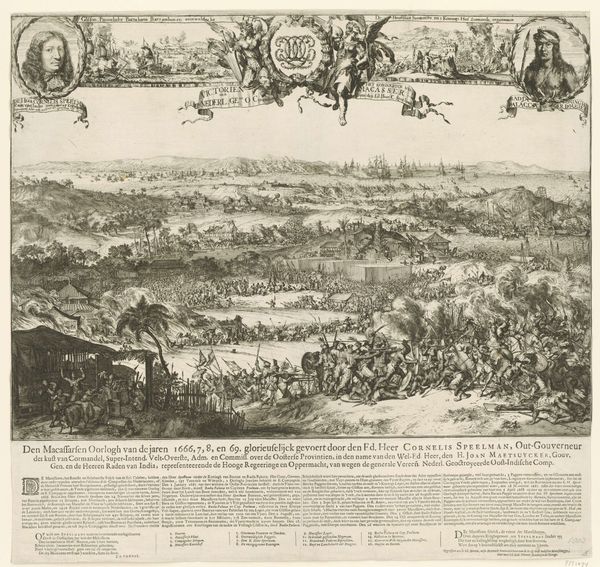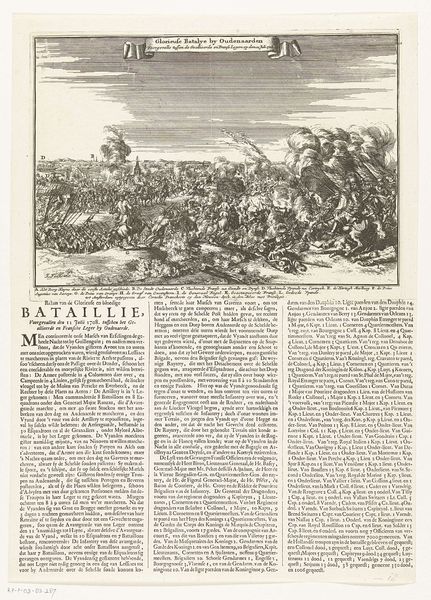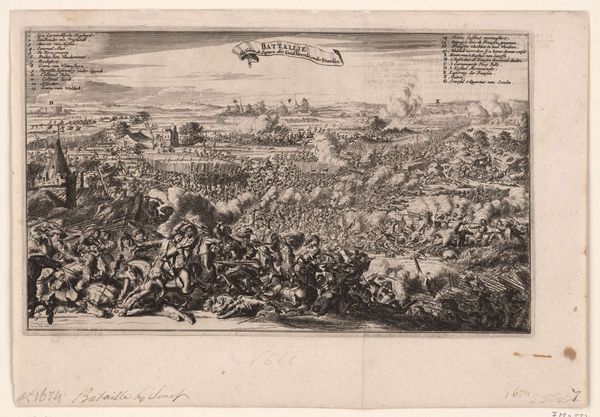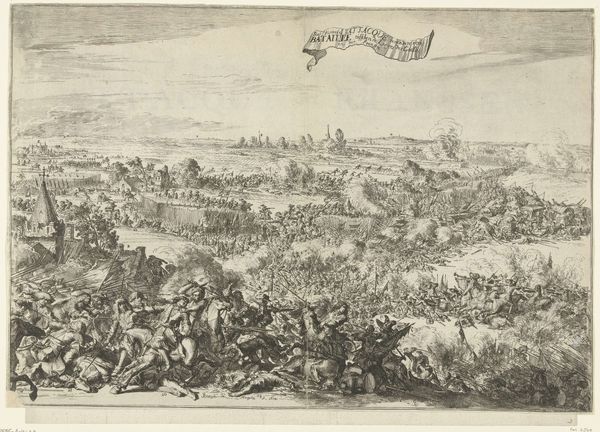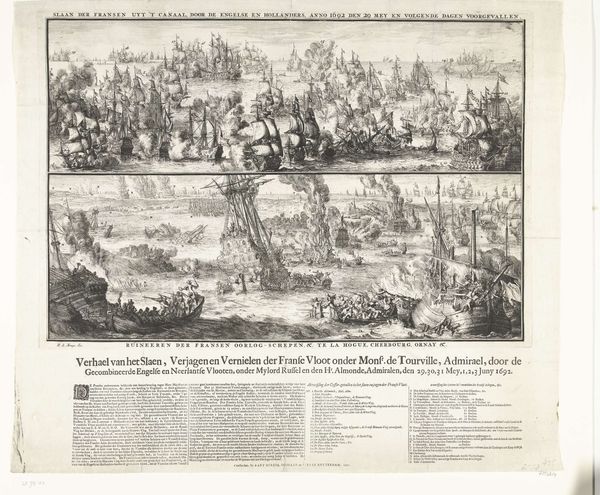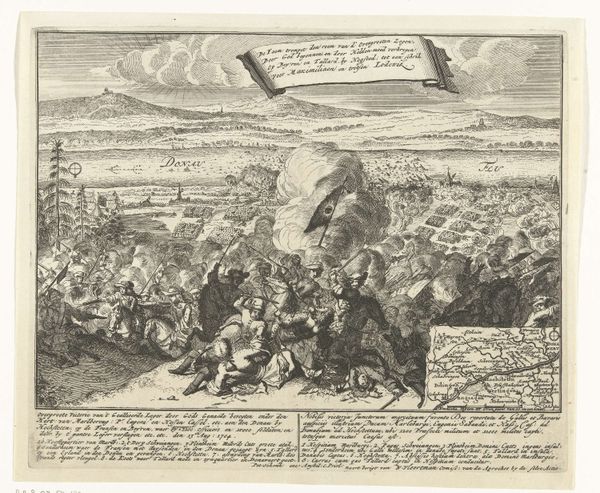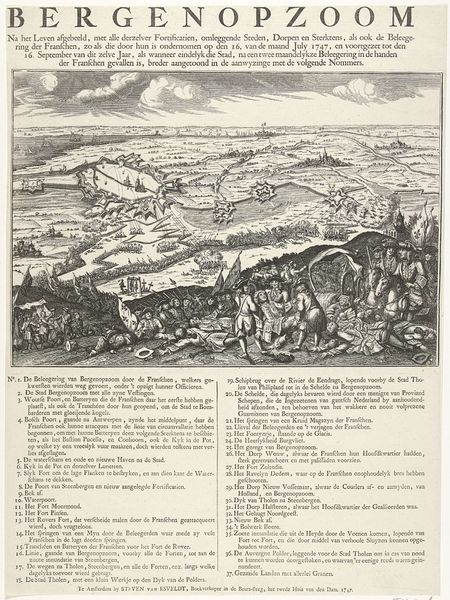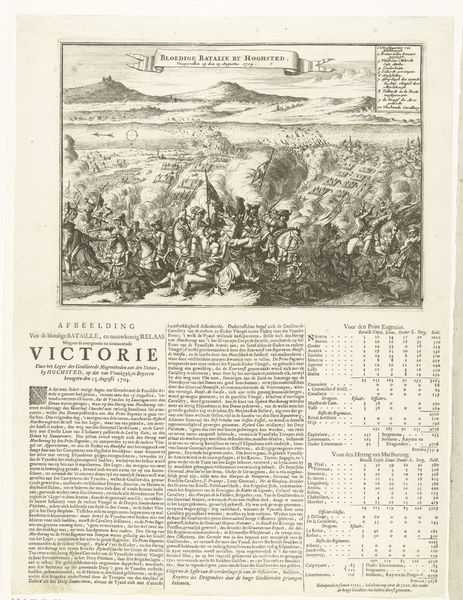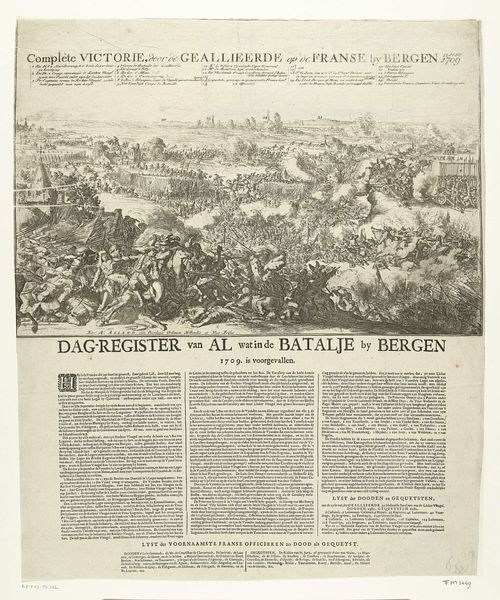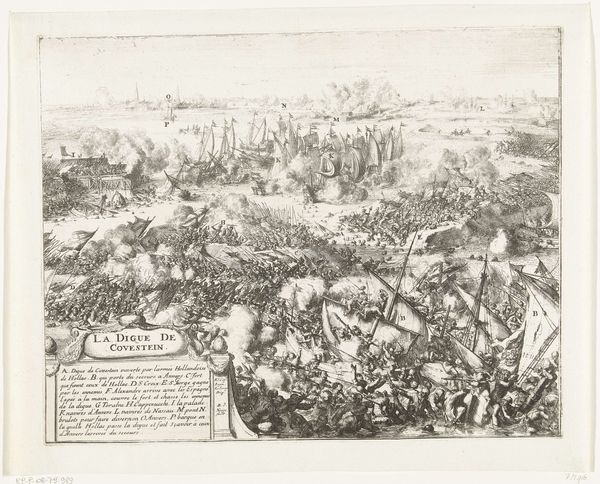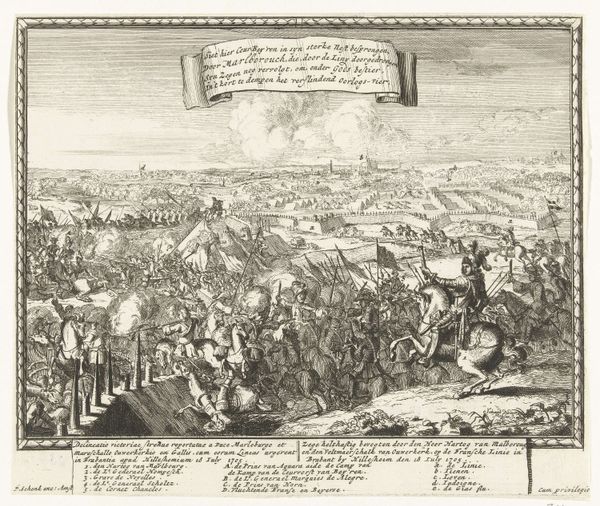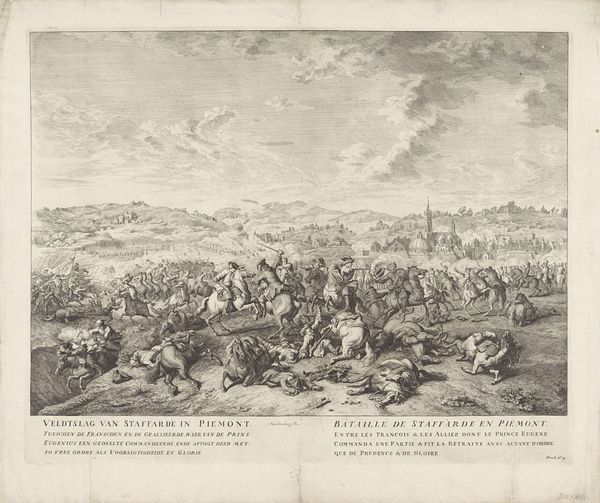
print, etching, engraving
#
aged paper
#
baroque
#
mechanical pen drawing
# print
#
etching
#
old engraving style
#
sketch book
#
landscape
#
figuration
#
personal sketchbook
#
sketchwork
#
pen-ink sketch
#
pen work
#
sketchbook drawing
#
history-painting
#
storyboard and sketchbook work
#
engraving
Dimensions: height 426 mm, width 392 mm
Copyright: Rijks Museum: Open Domain
Curator: The eye is immediately drawn to the chaos and dense composition. This work seems to capture a tumultuous scene, full of action and almost dizzying in its detail. It feels...overwhelming. Editor: Indeed. What you are sensing is precisely what the image sets out to depict. This engraving, titled "Slag bij Seneffe, 1674," visualizes the Battle of Seneffe, a significant event of the Franco-Dutch War. This print, dating from 1674, and held at the Rijksmuseum, offers an interesting glimpse into how war was documented and disseminated at the time. Curator: Documentation... and perhaps propaganda? The composition definitely steers the viewer towards a specific reading of the event. How objective can this depiction really be, considering it comes just after the actual battle it depicts? Editor: Absolutely, that's crucial to consider. The patronage and purpose would heavily influence the narrative. The artist’s choice to compress so much activity into one scene reflects the perceived importance and spectacle of war. Remember that these kinds of prints helped shape public opinion, so reading the battle is very much connected to socio-political narratives. What details jump out for you? Curator: The sheer number of bodies, for one! It's a stark representation of violence. But I’m also thinking about the implied power dynamics at play – who is centred in the composition, and how might this amplify existing narratives surrounding power at the time? Are women represented? Where is race considered within such renderings of war? Editor: Good questions. It's vital to recognise the limitations. Battle scenes, typically focused on male heroism, frequently erase women’s roles. While less overt than later periods, racial dimensions existed in 17th-century European warfare too. The artist makes specific representational choices, and its equally crucial to assess what isn't being depicted. Curator: Thinking critically about this absence challenges us to actively reconstruct fuller historical narratives, moving beyond limited visual representations. Editor: Exactly! Examining "Slag bij Seneffe" is an engagement with history itself, revealing not only events but the societal filters through which events are documented, remembered, and understood. Thank you for sharing your impressions! Curator: Thank you. I feel as though the piece allows the start of conversation, despite the historical limitations, a crucial reflection for a more critical view.
Comments
No comments
Be the first to comment and join the conversation on the ultimate creative platform.

